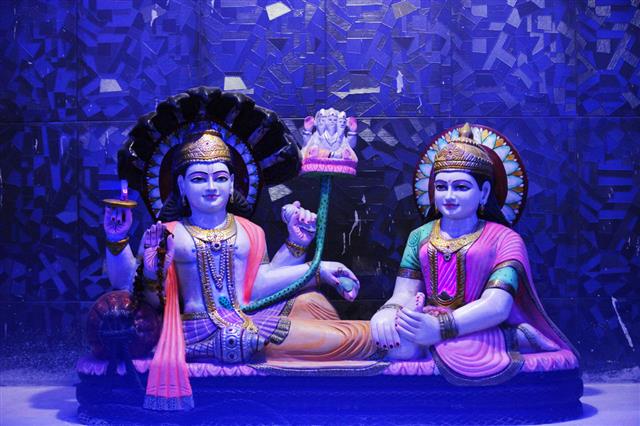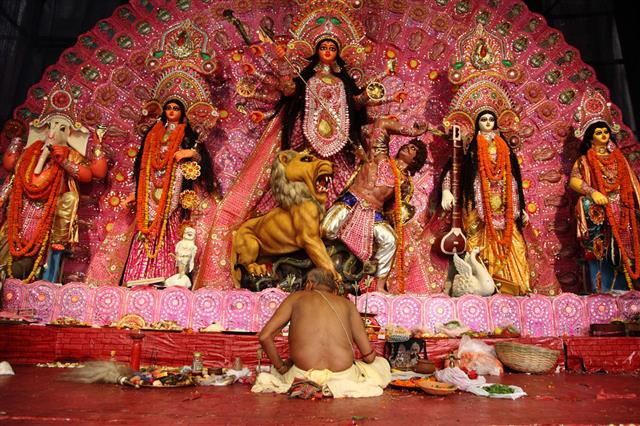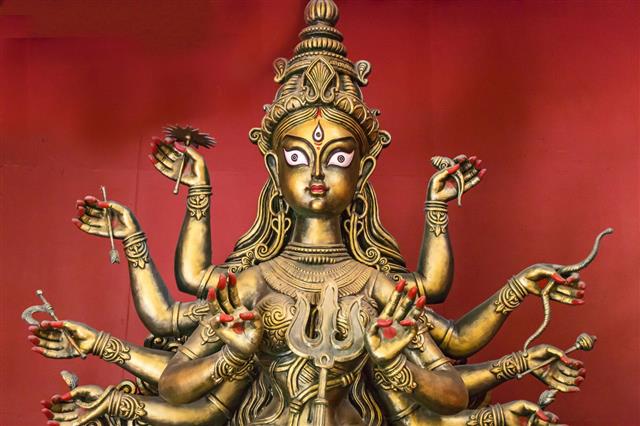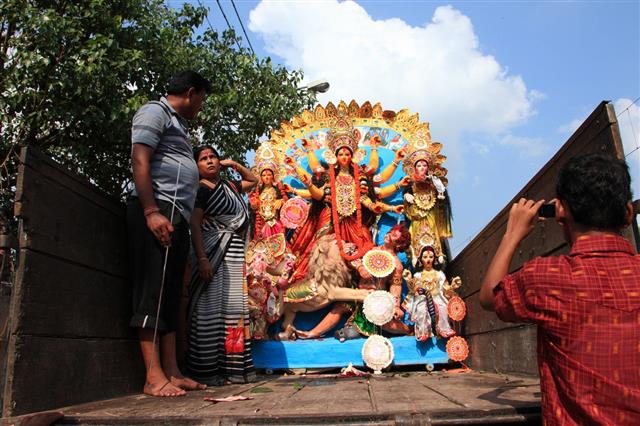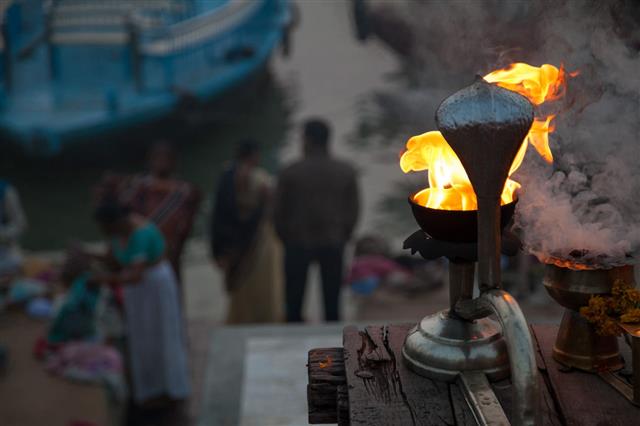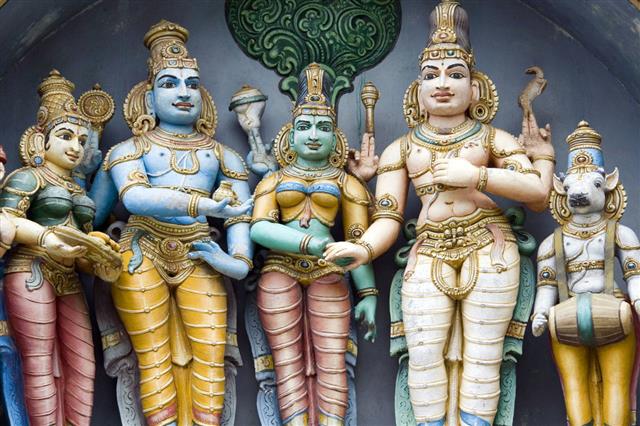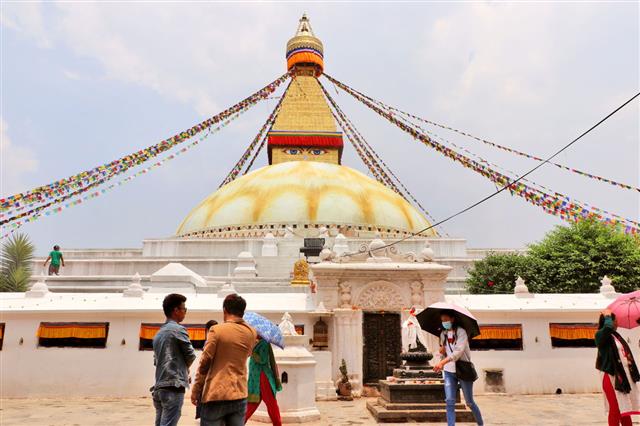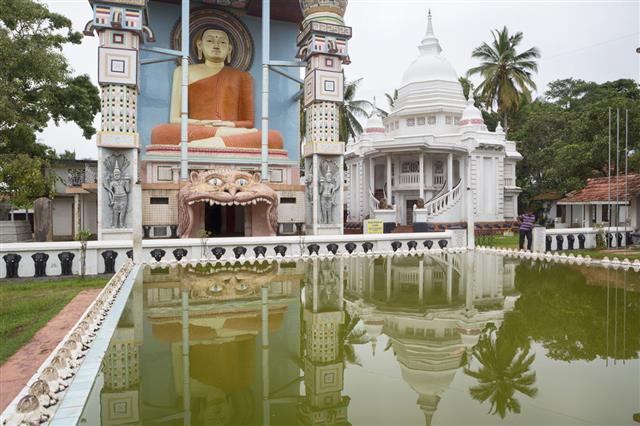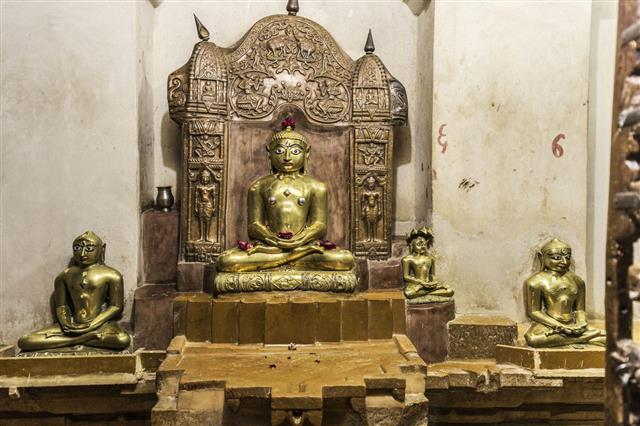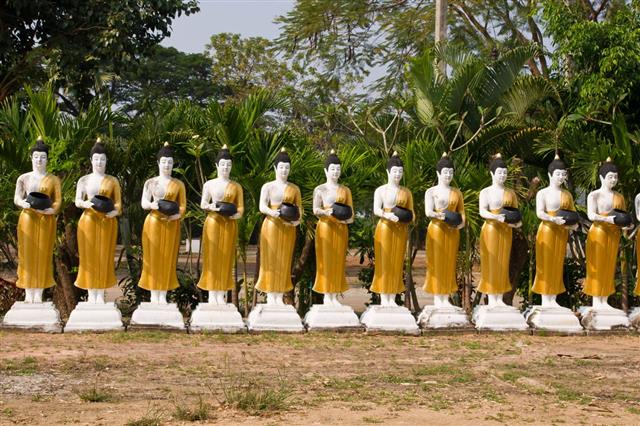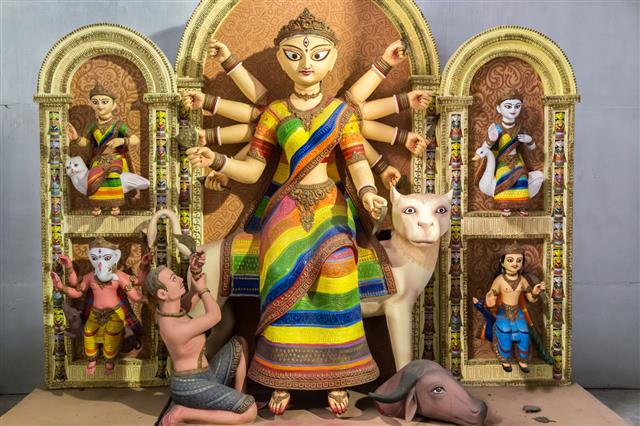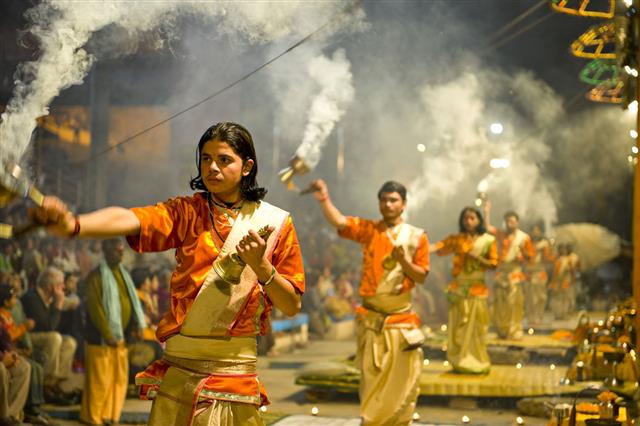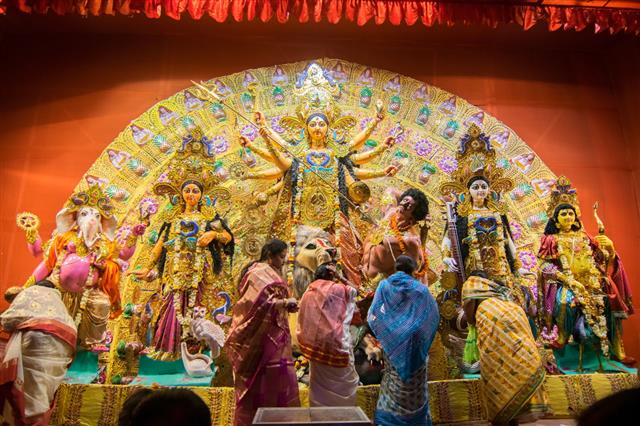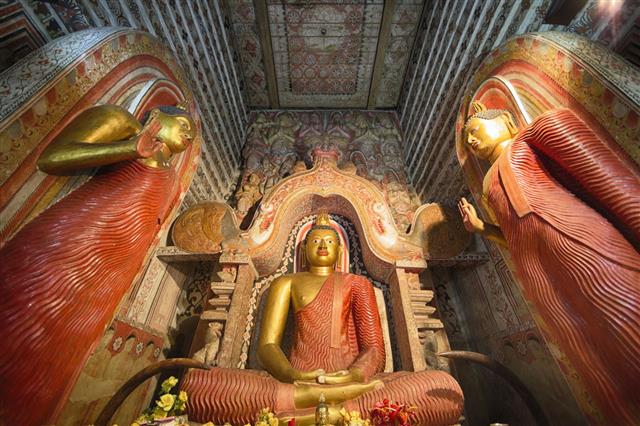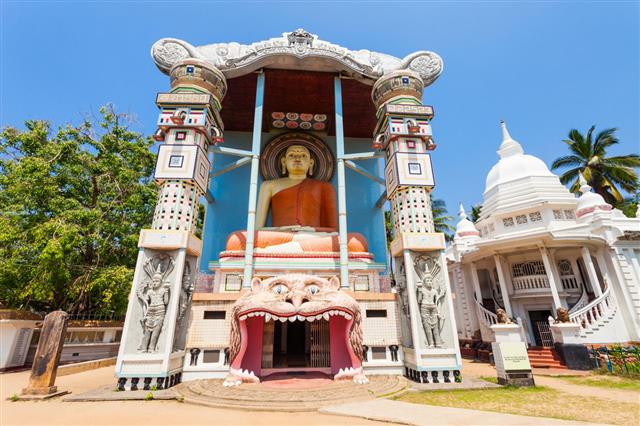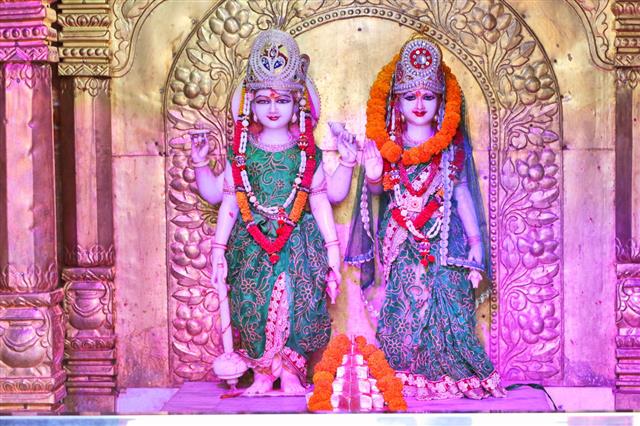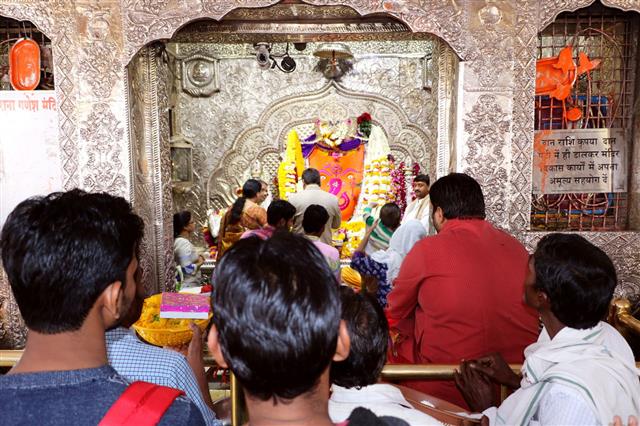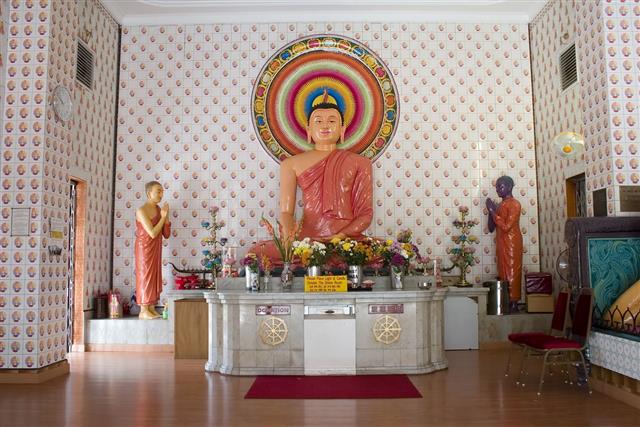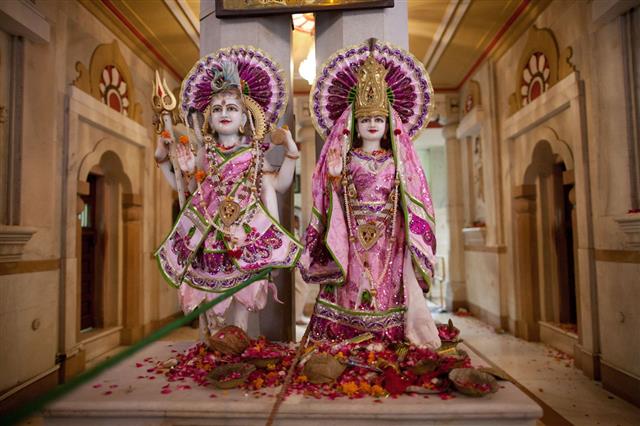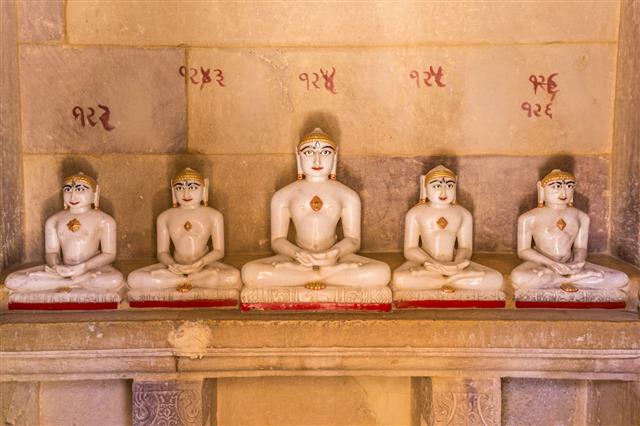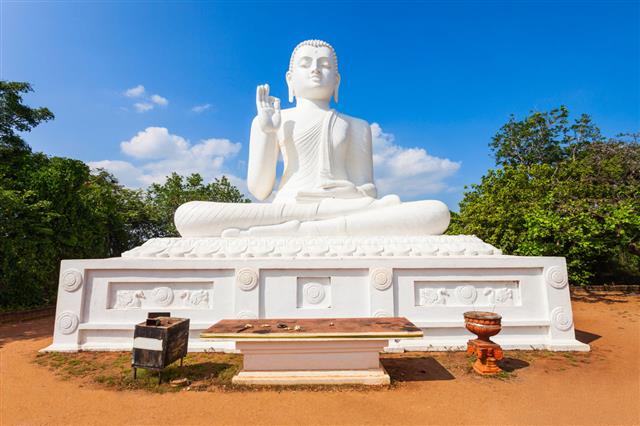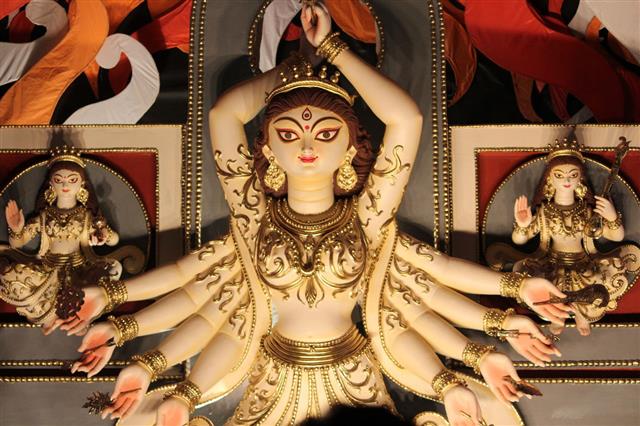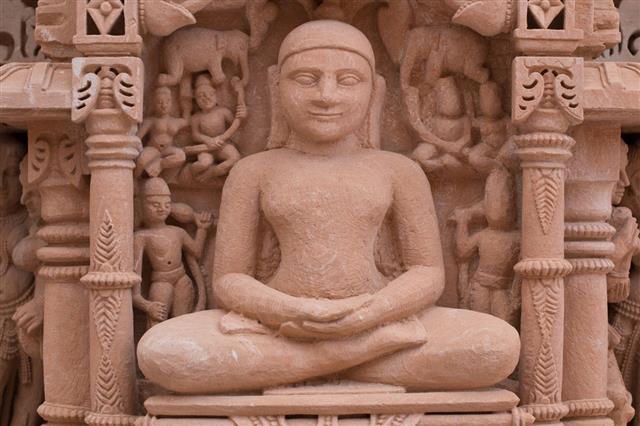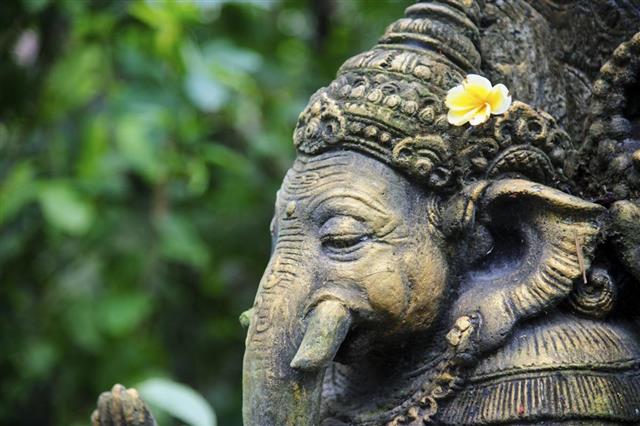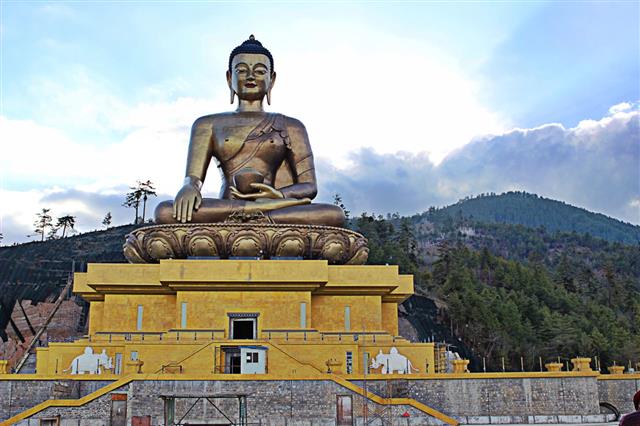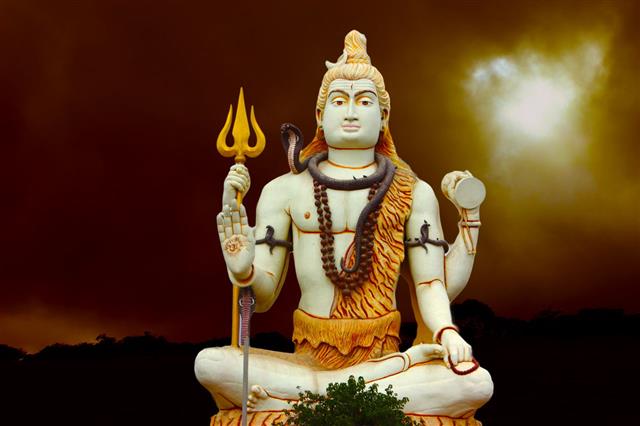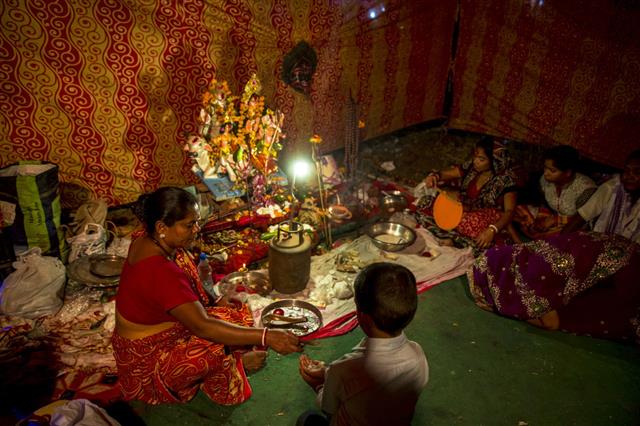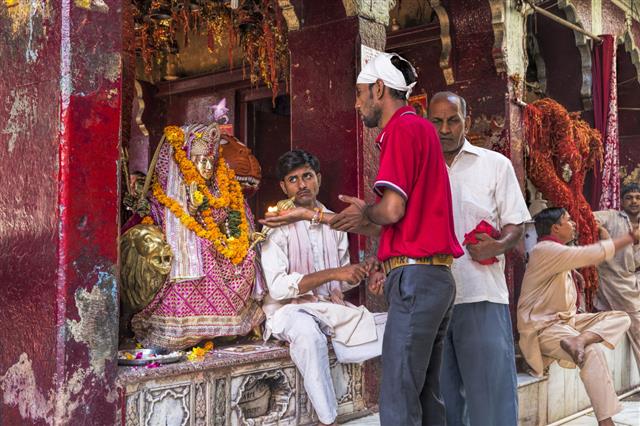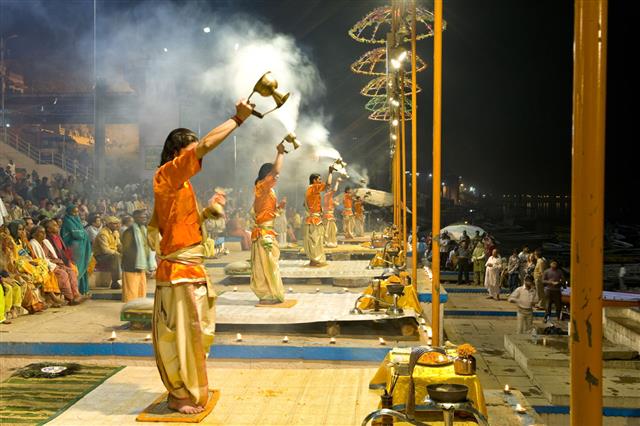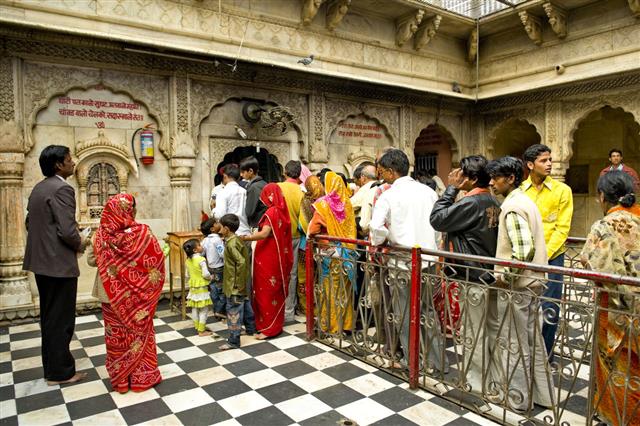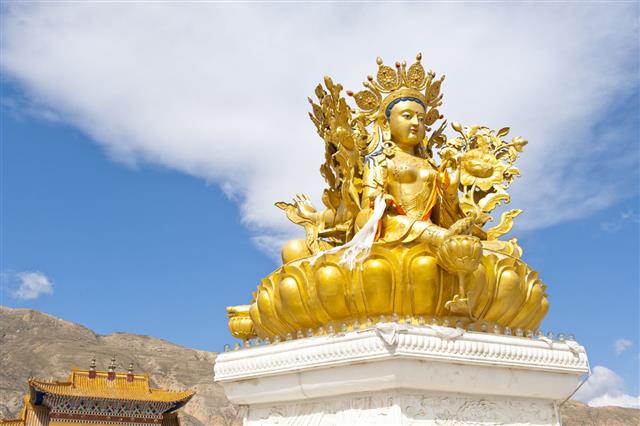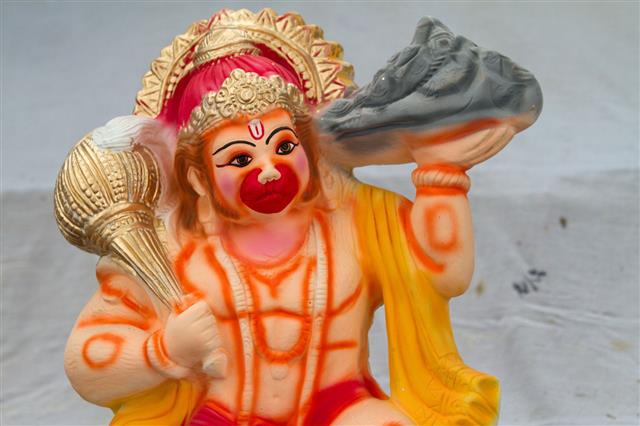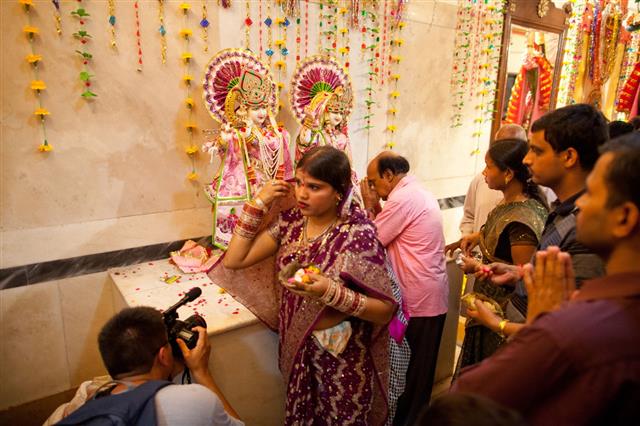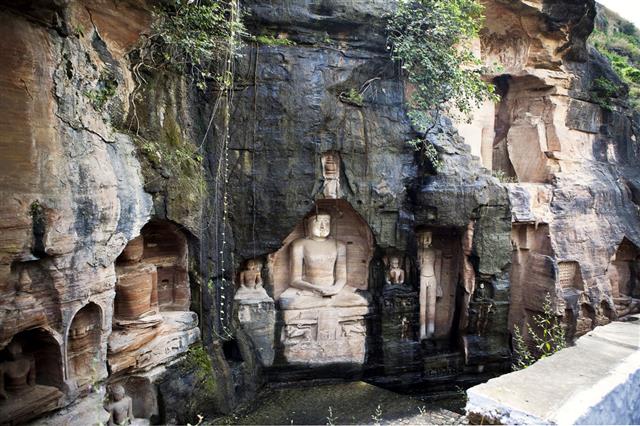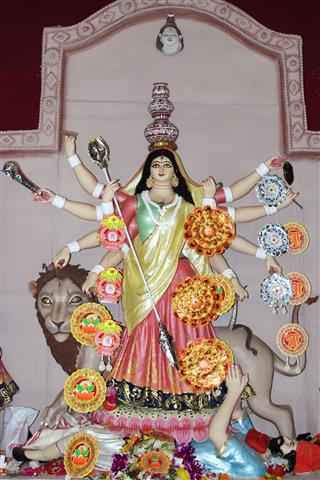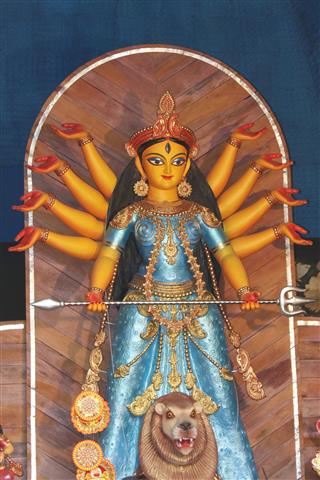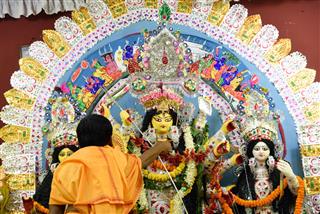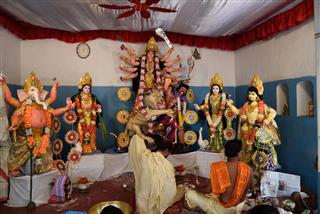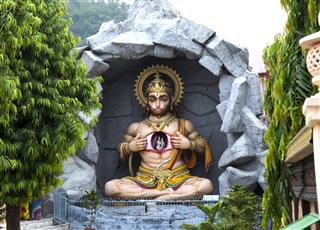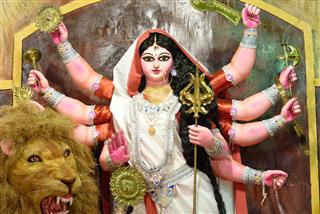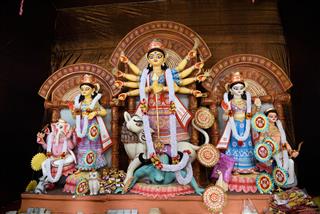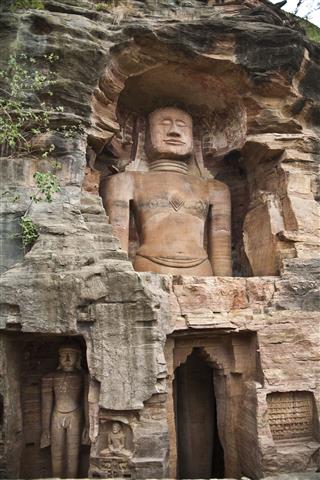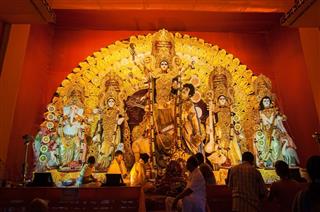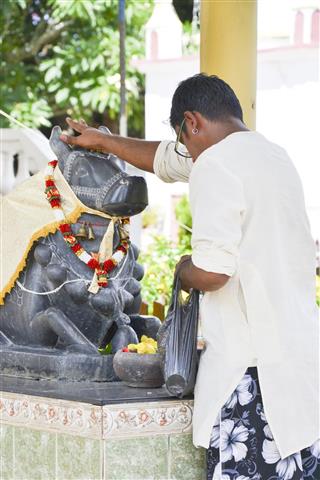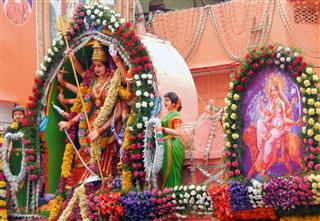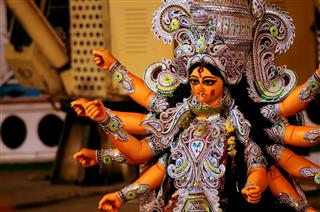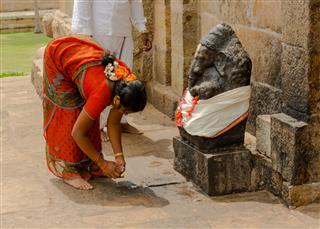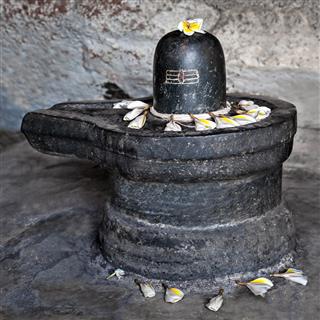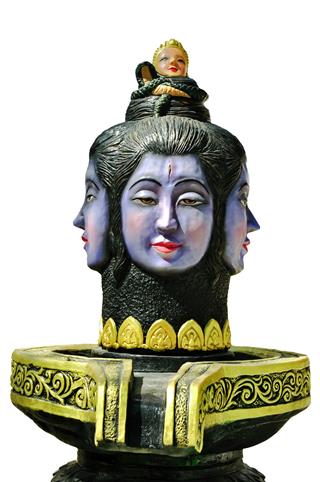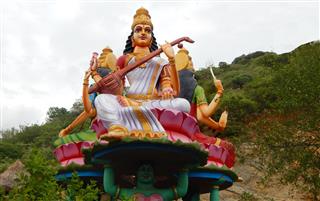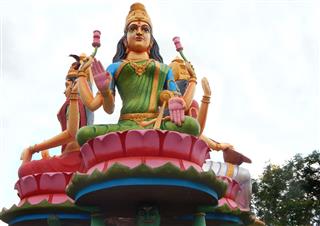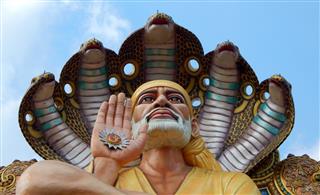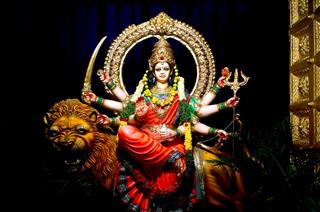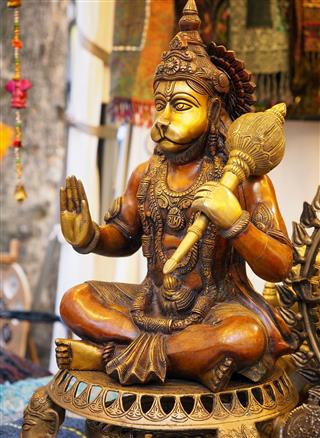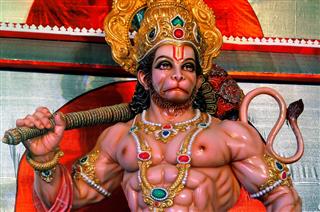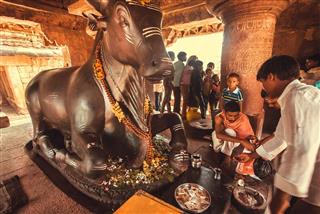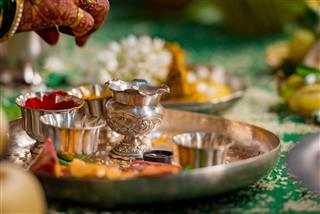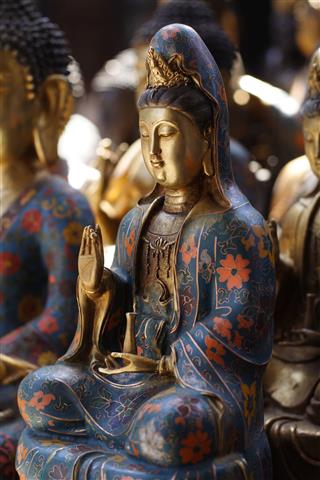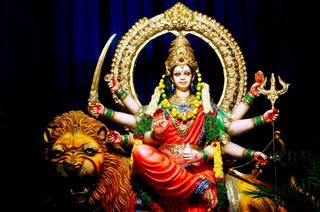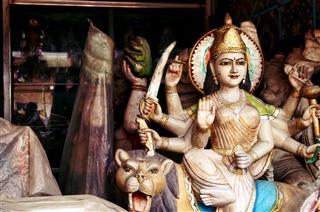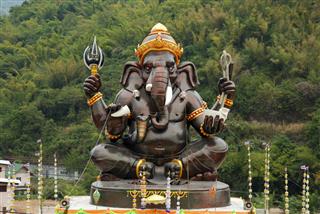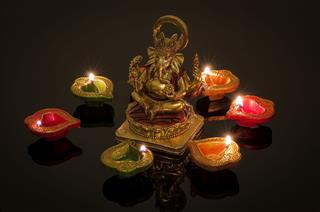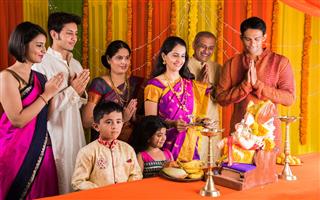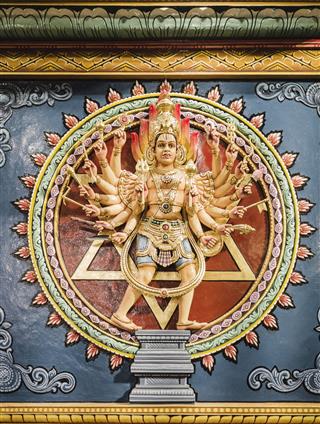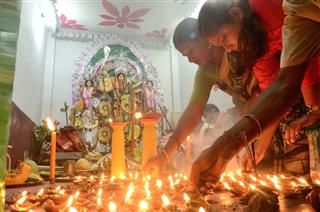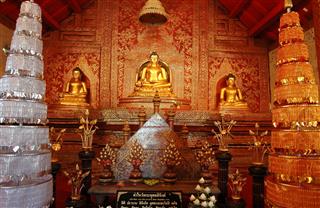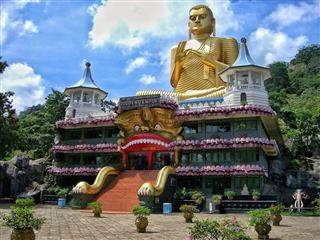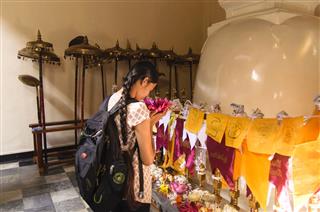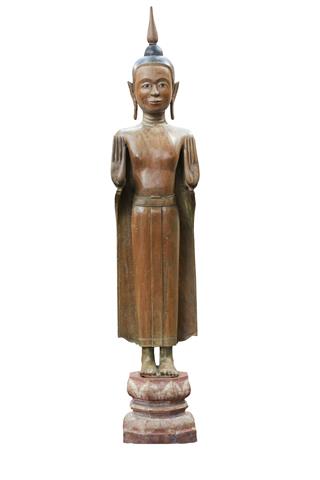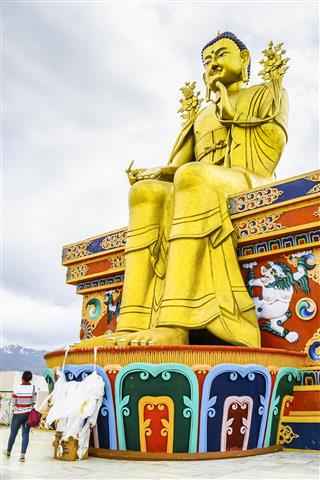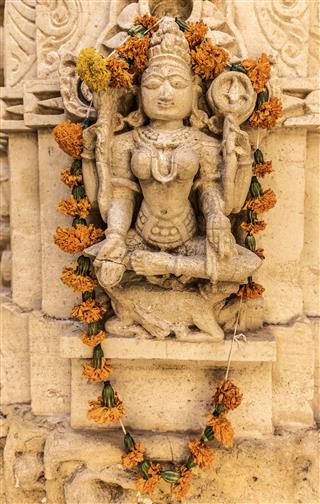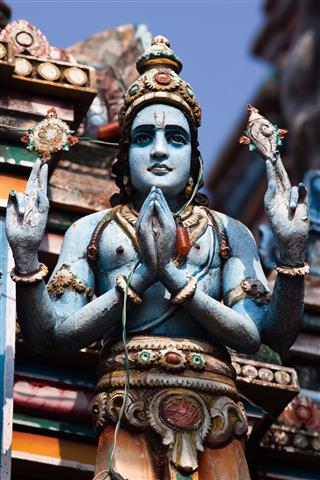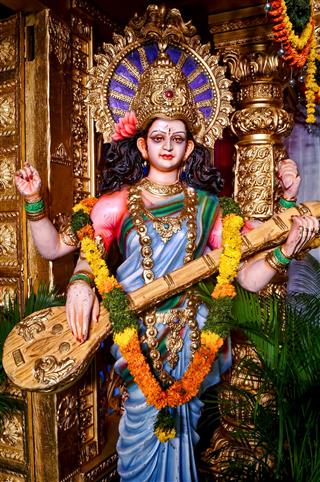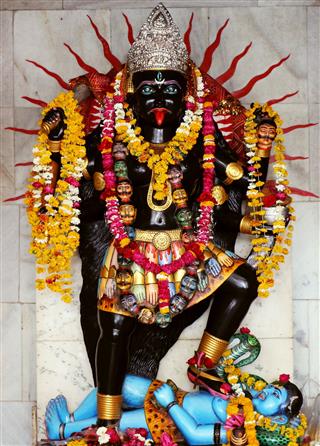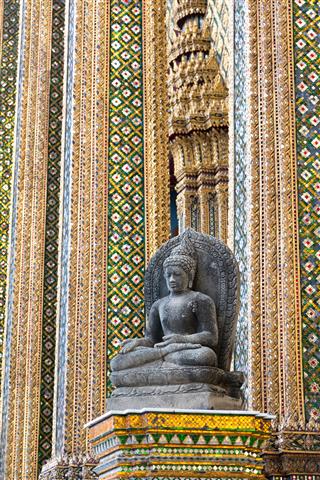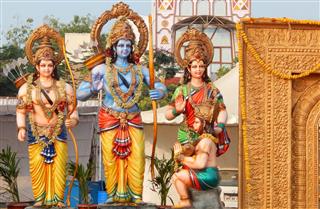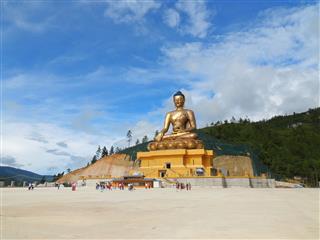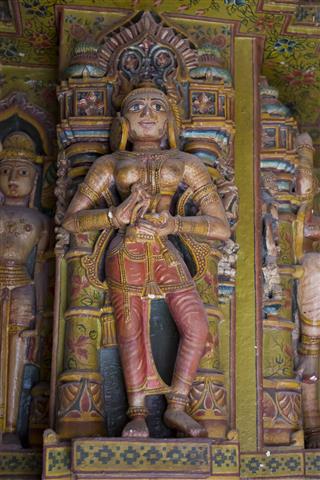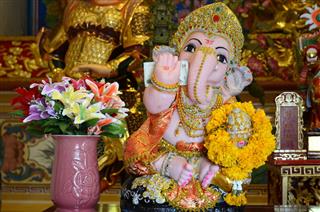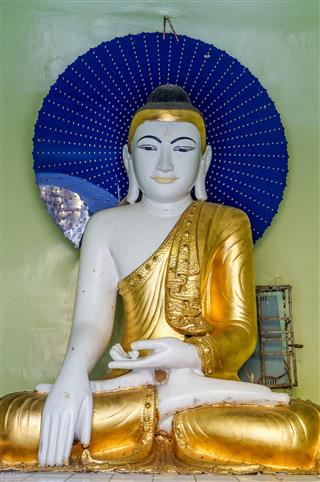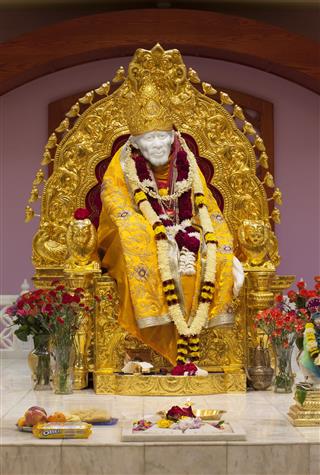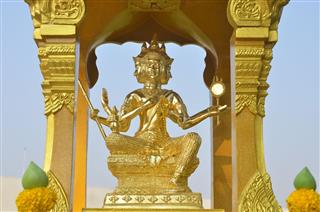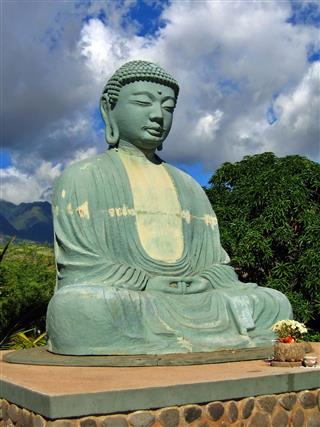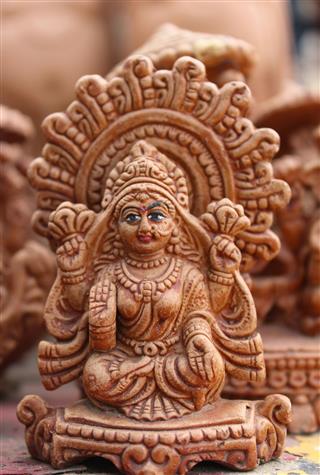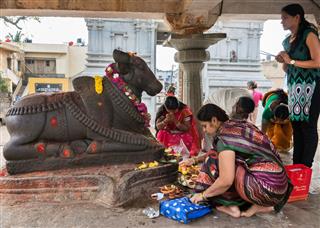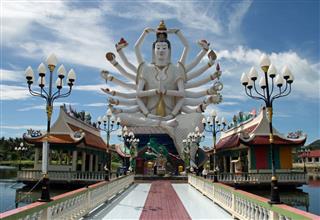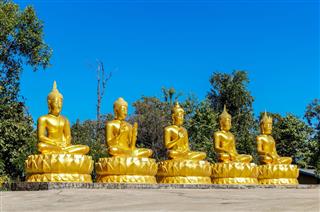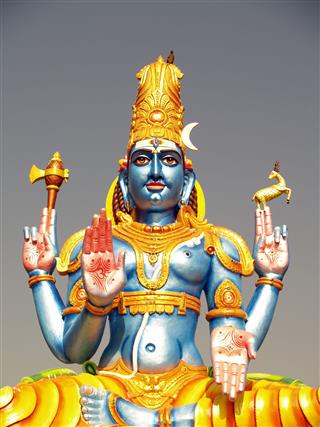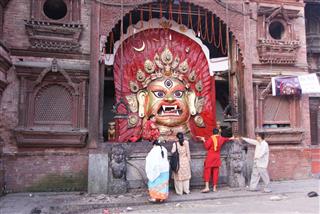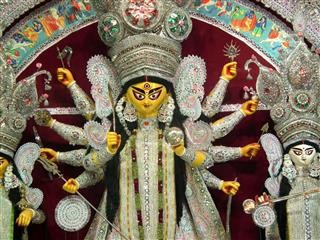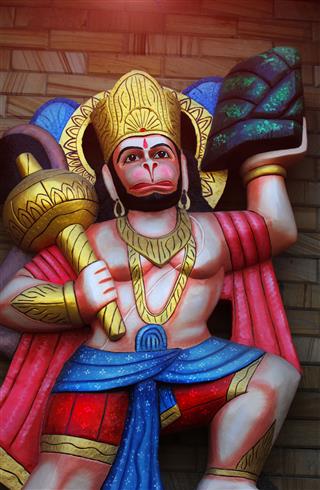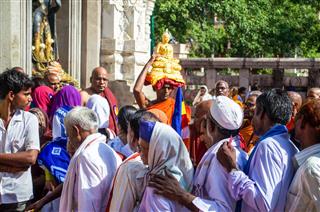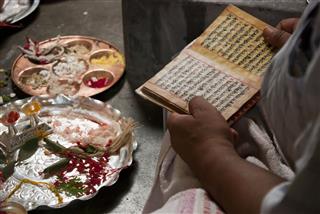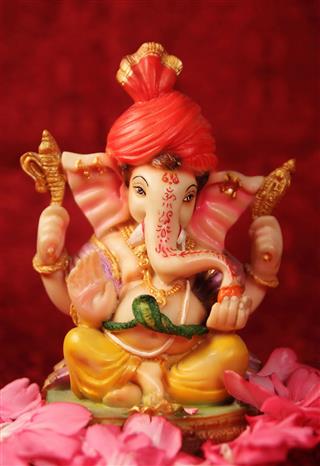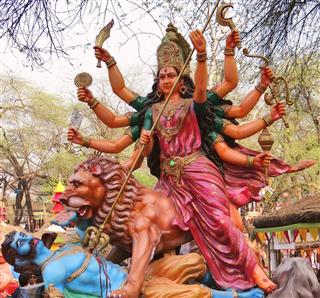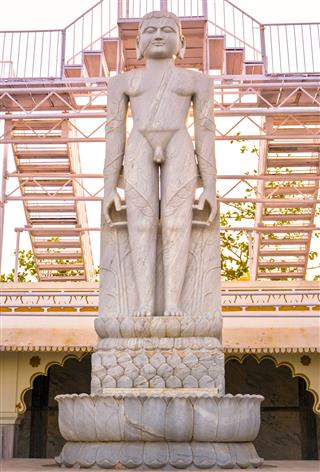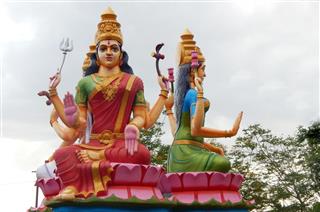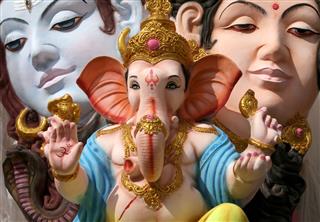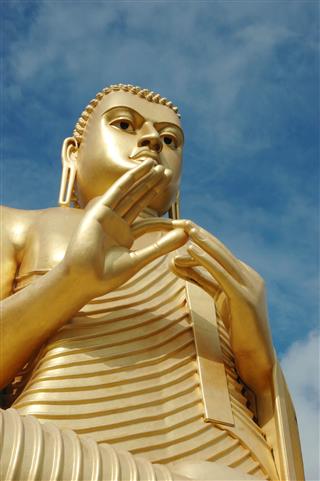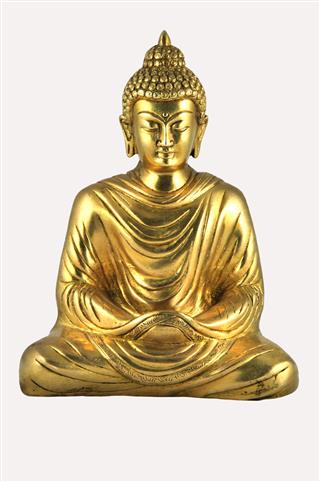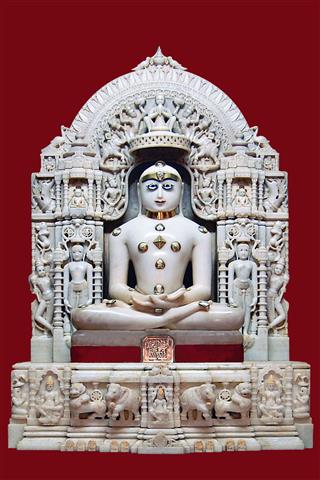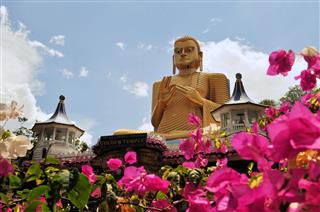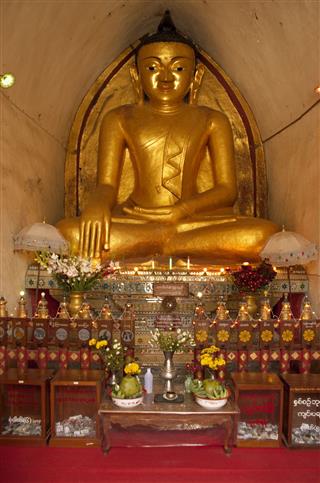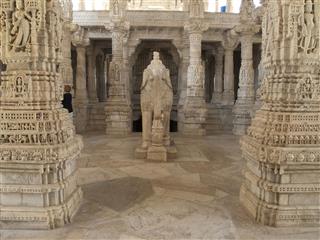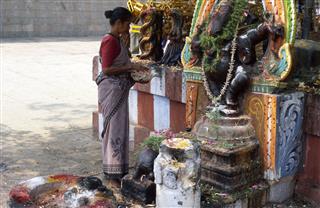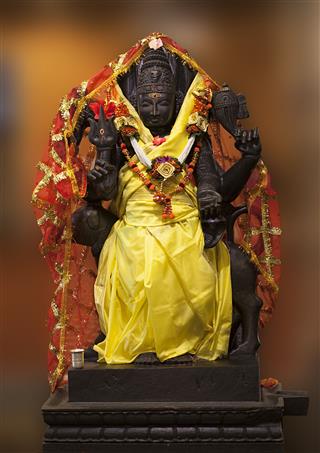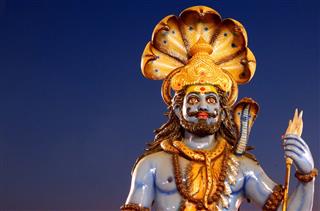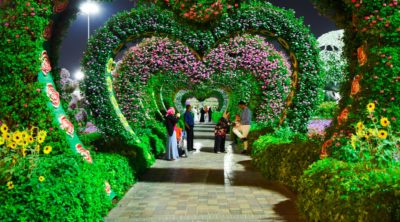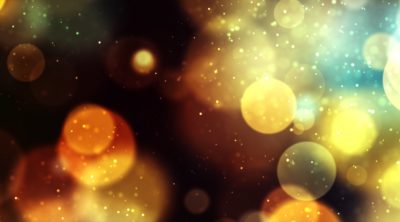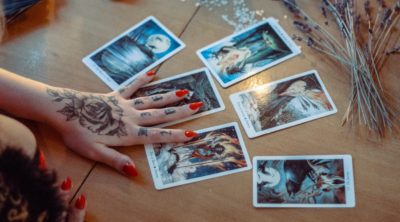
The Hindu religion has a vast mythology that is recorded comprehensively in scriptures. They list many gods and goddesses in their various manifestations. Each one has many interesting qualities and powers. SpiritualRay lists the important Gods and Goddesses in Hinduism, along with their powers.
Did You Know?
Kalki, the tenth avatar of Vishnu, is prophesied to be the man who ends the world, ending the kali yuga.
Hinduism, in its core philosophy, believes that there is one supreme being or god. All the other deities are manifestations or avatars. There are very important manifestations, and there are also a few relatively unknown ones. If you ask a layman to approximate the number of gods in the Hindu religion, pat comes the parrot reply, ‘330 million’.
The Hindu scriptures are vast and very deep in meaning, hence, there are so many commentaries by many scholars. There are infinite manifestations of the supreme being according to Vedic scriptures, and the numbers 33 million or 330 million are just the way of signifying that the one god has infinite manifestations. All these avatars have specific qualities, powers, and roles in the working of the universe. The reason people have the misconception that the Hindu religion is polytheistic, is because of the sheer number of gods and demigods narrated in the Vedic scriptures. But this is not so. In the end, the bottom line of every scripture states that the final goal of spirituality is that of realization of the One God. To get there, deity worship may be required and personalize may be needed. This is the reason why there are so many gods with so many qualities. One person may take a liking to one quality of a god and then worship him/her. This way, he takes the first step of realization of the Supreme.
In Hinduism there are three main sects – Shaivism, Vaishnavism, and Shaktism. Shaivism is the worship of Shiva, Vaishnavism refers to the worship of Vishnu, and Shaktism is the worship of Shakti or Devi. Smartism is a modern tradition that believes in the worship of more than one Gods, including Vishnu, Shiva, Shakti, Ganesha, and Surya.
THE TRINITY
Vishnu
Vishnu, by many sects in Hindus, is considered to be the supreme god. In a normal and general perspective, he is one of the Trimurti, along with Brahma and Shiva. He is seen as the Preserver (or maintainer) of the universe. According to the scriptures, mostly Vishnu Purana, the universe came into being from his navel, and the first living being born was Brahma.
Shiva
Shiva, as mentioned above, is one of the three primary gods in Hinduism. He is considered to be the supreme being by one of the Hindu sects. He is seen as the Destroyer (or transformer) of the universe. He is one of the most recognizable Hindu deities, and is very popular among all Hindus.
Brahma
One of the holy trinity in Hinduism, Brahma is the Creator of the universe. He is usually depicted with having four heads. He is seen sitting in a lotus, meditating. In Vedic philosophy, Brahma is the embodiment of intellect, and is present as intellect in all human beings.
Brahma is the creator of the Vedas. There are four Vedas, and it is said that each one of them came from one of his heads. Brahma is also said to be reciting the Vedas continuously and simultaneously from each of his four mouths. He is all knowledgeable, and is the creator of all beings in the universe.
THE TRINITY OF GODDESSES
Laxmi
Laxmi is another popular goddess in Indian households, and is widely worshiped. Laxmi is the eternal consort of Vishnu, and is also the goddess of wealth. This is not only material wealth but also the spiritual aspect of it. She endows with wealth whoever worships her.
Goddess Laxmi is exclusively worshiped during the festivals of Diwali, Navratri, and Kojagiri Poornima. She bestows wealth upon the deserving, and abandons the people who use money carelessly. She also grants worshipers with spiritual and intellectual advancement.
Parvati
Parvati is the wife of Shiva and his eternal consort. She is considered to be the ‘Adi Shakti’ or the primordial force that keeps the universe together. She is seen as a benevolent mother among the Hindus. But in the scriptures, in certain instances, she has taken the form of Kali and Durga, who are chastisers. Parvati is said to convert to the fierce avatar when she is angry.
Parvati has infinite power, and is even respected by the Trimurti. She is also considered to be the sister of Vishnu. This is because, in her primordial form, she is the ‘Shakti’ of the Supreme God, that is Vishnu.
Saraswati
Goddess Saraswati is the eternal consort of Brahma, the creator of the world. And as he is the source of all knowledge in the universe, Saraswati is the embodiment of knowledge itself. She is usually shown playing the sitar, sitting in a lotus.
She holds a book in one of the hands and a lotus in another. The book signifies material knowledge and the lotus signifies actual knowledge―that is, the knowledge of the self. She is the giver of speech, wisdom, and learning. She is also the supreme knower of fine arts like music, arts, and literature.
Other Hindu Deities and their Powers
Kali
She is the embodiment of kala, or time. She is also darkness personified, and is extremely powerful. Kali is the goddess of death, time, and change.
Yama
He is said to be the God of death. He is the keeper of records of karma and the corresponding punishment the actions of a human deserves in the underworld.
Ganesha
Ganesha is the god of auspiciousness. He is known to be the destroyer of bad luck and obstacles.
Vithoba
Known by the names Panduranga and Vitthala, he is seen as an incarnation of Vishnu. He is depicted as dark. He stands on a brick, with hands on the hips and elbows bent outwards. He is accompanied by his consort Rakhumai.
Hanuman
He is seen as the giver of strength and courage, and is very benevolent to true devotees. He is one of the Chiranjivis (immortals) in Hinduism.
Dattatreya
He is depicted in the form of Trimurti, with Brahma, Vishnu, and Shiva together. According to the Nath tradition, this deity is an incarnation of Shiva. He is worshiped for attaining knowledge of the Absolute Truth. In Dattatreya Purana, he is considered as the incarnation of the trinity and hence believed to be all-powerful.
Indra
He is the King of the Gods residing on Swarga or Heaven.
Venkateshwara
Also known by the name Balaji, he is an incarnation of lord Vishnu. He is worshiped in South India.
Jagannatha
He is a form of Vishnu (or Krishna). He is worshiped in many parts of eastern and north-eastern India and by Hindus in Bangladesh.
Kartikeya
He leads the army of gods and is considered as the god of war. He is the son of Shiva and Parvati. His other names include Skanda and Murugan.
Dhanvantari
An incarnation of Vishnu, he is considered as the god of Ayurveda medicine. He is believed to have risen during the Sagar manthan, bearing a pot of nectar (Amrita). He is worshiped for good health.
Dhuti
Dhuti is the demigod of health and magic.
Prajapati
He is the lord of procreation, and is responsible for the propagation of life on Earth.
Tvastr
He is the creator-god, who creates the bodies of men and animals, and even heavenly bodies.
Daksha
Daksha is one of the creator-gods of the universe. He is the son of Brahma, and has powers similar to his brother Surya.
Savitr
He is one of the creator-gods, with similar powers to that of Daksha and Surya. Surya is also known as Savitr before sunrise.
Aryaman
Is the bosom friend, and is invoked during oath-taking ceremonies.
Kamadeva
He is the god of desire. This includes all sensual desires, including love.
Rudras
The Vishnu Purana states that Rudra was created out of the anger of lord Brahma and appeared in the Ardhanari (half male, half female) form. The male form divided itself into eleven parts – forming the 11 Rudras, while Rudranis were born out of the female form. The Ramayana states Rudras as the children of sage Kashyapa and his wife Aditi, whose other children include Adityas, Ashvins, and Vasus. Different scriptures call Rudras by different names. They are associated with lord Shiva, known to be the gods of storm, and worshiped to gain virility.
Adityas
Referred to as Sun-Gods, their twelve names are given in the Bhagavata Purana. It is said that a different one shines in each month of the year. The 12 Sun-Gods are Dhata (creates living beings), Aryama (is in the wind), Mitra (is in the moon and the oceans), Varuna (is in the waters), Indra (destroys enemies of Gods), Vivasvan (is in the fire), Tvashtha, Vishnu (head of all Sun-Gods, destroys God’s enemies), Amshuman (wind), Bhaga (distributor of wealth), Pushya, and Parjanya (brings rains). Names differ across scriptures.
Ashvins
They are two Vedic gods, depicted as horsemen. They symbolize the sunrise and the sunset.
Elemental Gods
Also known as Vasus, they are attendants of Indra and Vishnu. They are representative of the main elements of nature.
Agni – God of fire
Vayu – God of wind. The Ramayana states that when Vayu withdrew with sadness, creatures started to die on earth.
Prithvi – She is mother earth and the carrier of all beings.
Surya – The Sun god. He is depicted as riding a chariot drawn by seven horses.
Dyaus – The Sky god
Antariksha (Aha) – Space
Nakshatra – It is the constellation of gods that appear as stars.
Soma – The Moon god. He is depicted as beautiful and proud.
Avatars of Vishnu
They are ten in number and collectively known as Dashavatara meaning dasa (ten) avatar (incarnations). It is believed that lord Vishnu incarnates on earth to end evil and restore good. In Bhagavad Gita, Krishna says that he appears on earth millennium after millennium to re-establish the principles of religion. Here is a list of the avatars of Vishnu in the order of their appearance. The first four appeared in Satya yuga, the next three in Treta yuga, the eighth and ninth incarnation was in Dwapara yuga, and the tenth will appear at the end of Kali yuga. While Buddha is widely accepted as an avatar of Vishnu, some scriptures do not include him in the Dashavatara, and consider Balarama as the eighth incarnation of Vishnu, followed by Krishna and Kalki.
Matsya – This avatar of Vishnu is in form of a fish. He comes to save Manu, the first man, from an apocalyptic flood.
Kurma – A tortoise avatar, Vishnu supports the celestial churning of the celestial milk to extract amrit, or the drink of immortality.
Varaha – Vishnu takes the avatar of a boar to defeat a horrible demon named Hiranyaksha. Their fight lasted a thousand years.
Narasimha – Is half-man and half-lion. Takes this terrible avatar to kill the demon father of his ardent worshiper.
Vamana – Appeared as a short Brahmin. He restored Indra’s rule on the three worlds.
Parashuram – Popularly depicted with an ax that he is believed to have received from Shiva. He is one of the seven Chiranjivis (immortals) in Hinduism. He is believed to have fought against the seas to save lands and wiped out Kshatriyas from the earth.
Rama – He is known to be the most ideal man to have ever lived. He is known as Maryada Purushottama (Lord of Self-Control). He is worshiped for his righteousness and valor. He was the main character of the epic Ramayana.
Krishna – He is known to be the most complete avatar of lord Vishnu. By many sects in Hinduism, he is considered as the Supreme God. Bhagavad Gita, the holy book of Hindus comprises his conversation with Arjuna. This narrative is a part of Mahabharata, in which Krishna provides Arjuna with guidance and counseling about his duty on the battlefield.
Buddha – Founder of Buddhism who preached ahimsa. Many Hindu scriptures include him in the 10 avatars of Vishnu.
Kalki – Final incarnation of Vishnu and the bringer of Armageddon, where he is prophesied to destroy all the unrighteous people in the world at the end of kali yuga.
Navagraha (Planetary Gods)
This comprises five planets, the Sun, Moon, Rahu (ascending lunar node), and Ketu (descending lunar node). The planets included are Mars, Mercury, Jupiter, Venus, and Saturn represented by Mangala, Budha, Guru, Shukra, and Shani respectively. The Navagraha are believed to influence the course of one’s life. They are worshiped to remove difficulties and bring good luck.
Surya – He is Sun god and the chief of Adityas. The recital of Gayatri Mantra is known to please him.
Chandra – Symbolizing the Moon, he is also known as Soma.
Mangala – Also known as Bhauma, he is considered as the son of Bhumi or Earth. He is the god of war.
Budha – Believed to be the son of Chandra and Tara, he is the god of merchandise.
Guru – Also known by the name Brihaspati, he is believed to be the guru of gods. He is the god of wisdom.
Shukra – He represents wealth, happiness, and reproduction.
Shani – A demi-god, son of Surya and Chhaya, he represents career and longevity.
Rahu – God of Ascending
Ketu – God of Descending
These were the main Hindu gods and goddesses, along with their powers, qualities, and avatars. Hope the article has intrigued you enough to read more about the wonderful religion of Hinduism.

